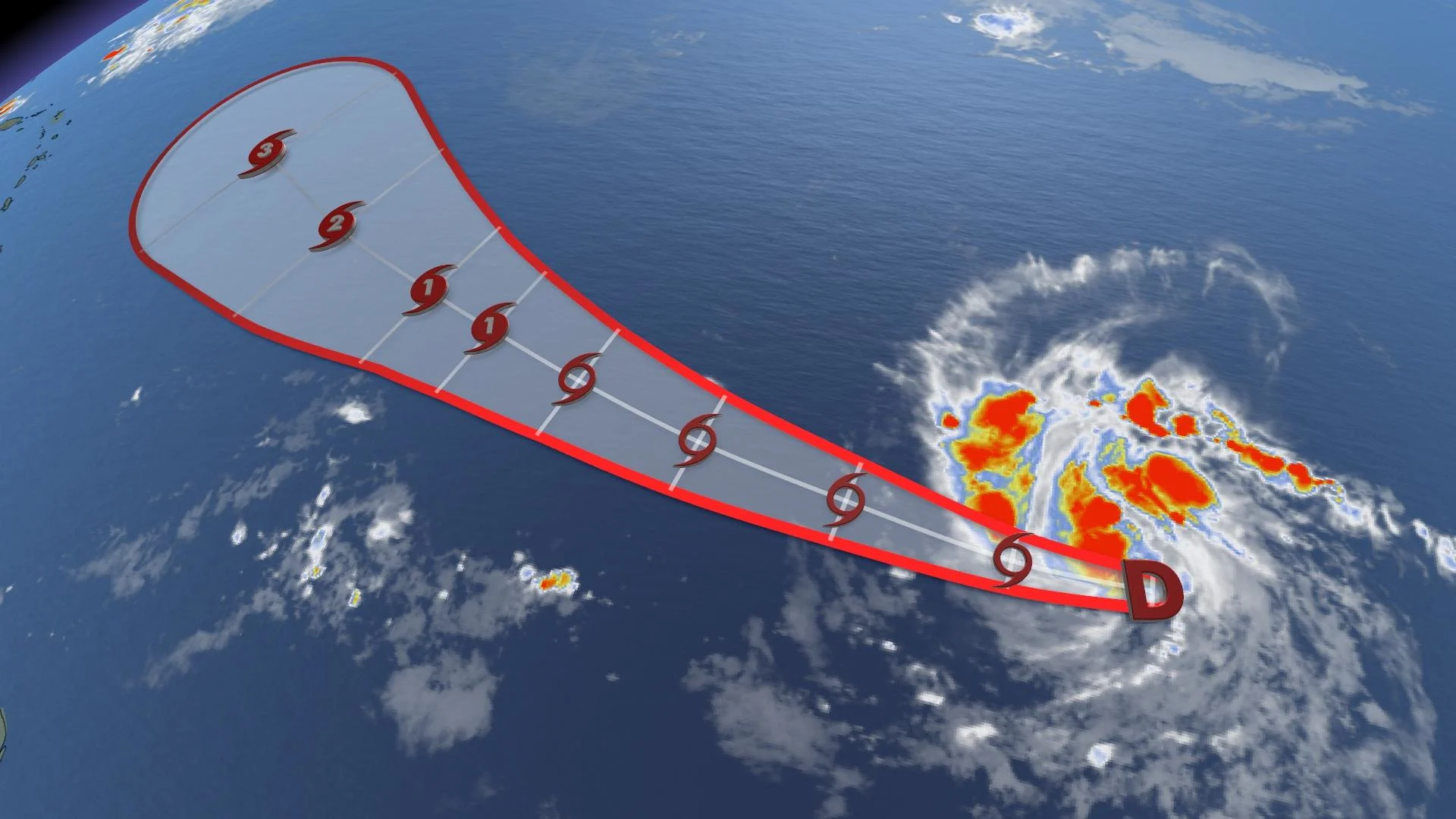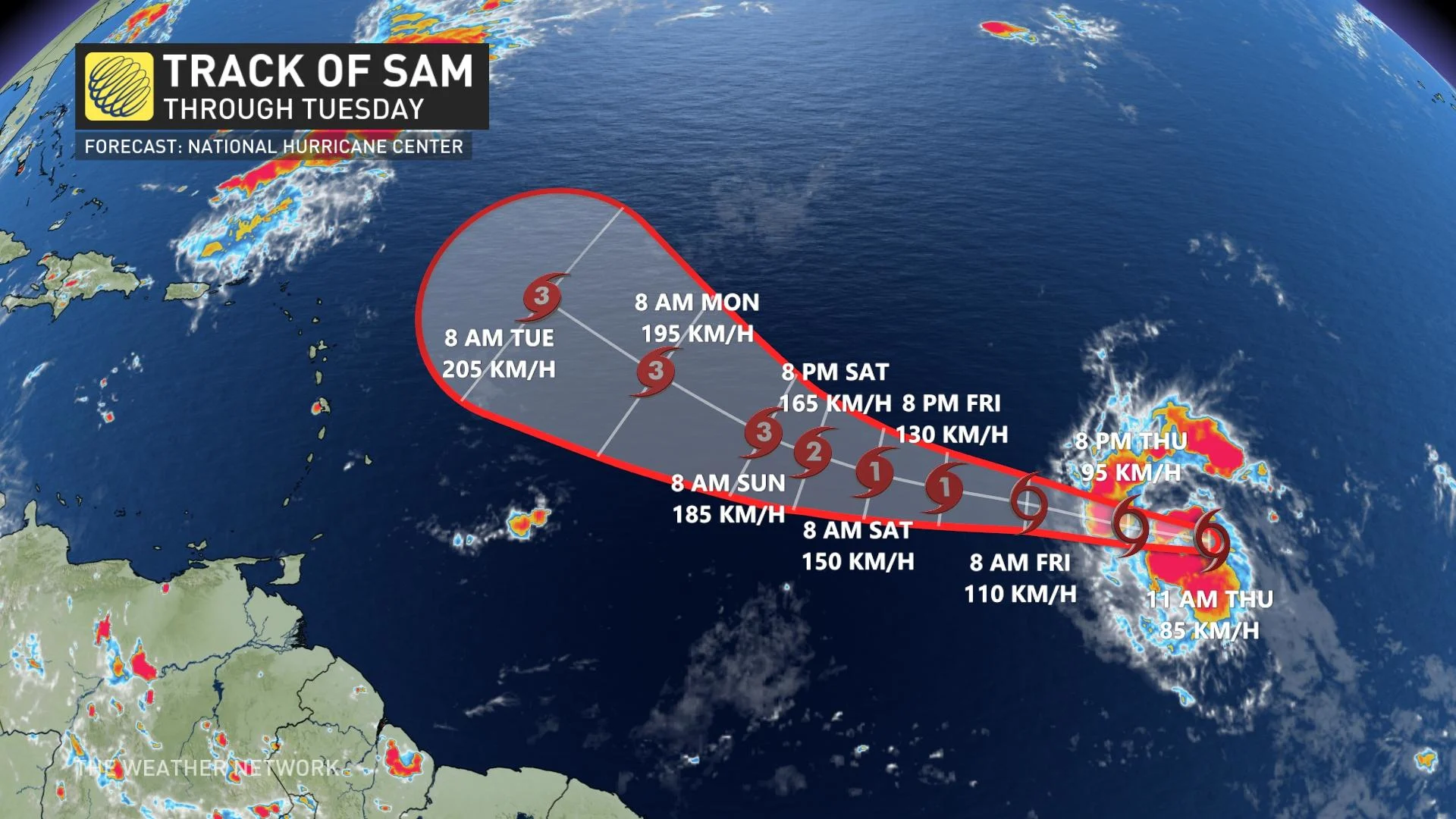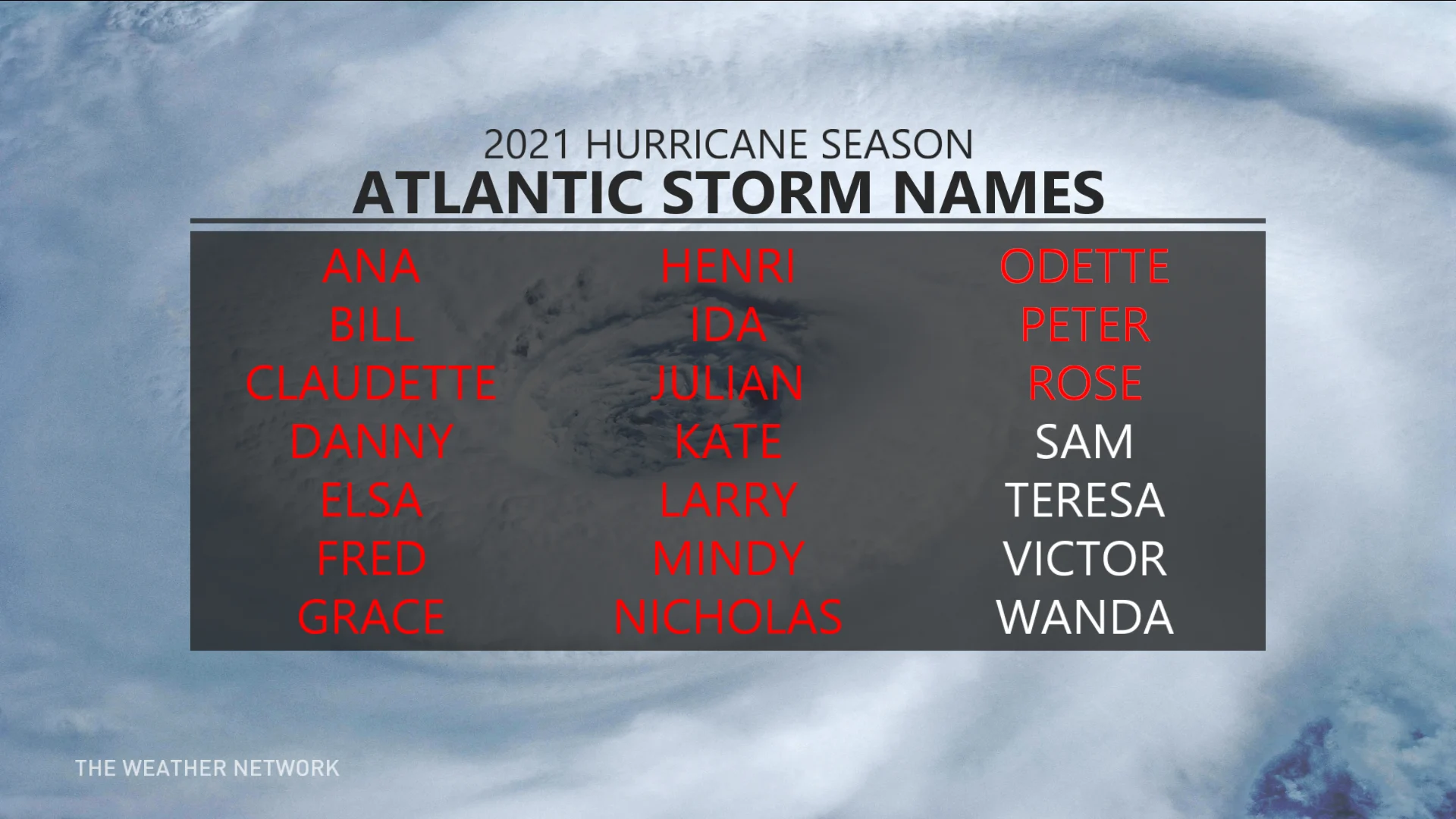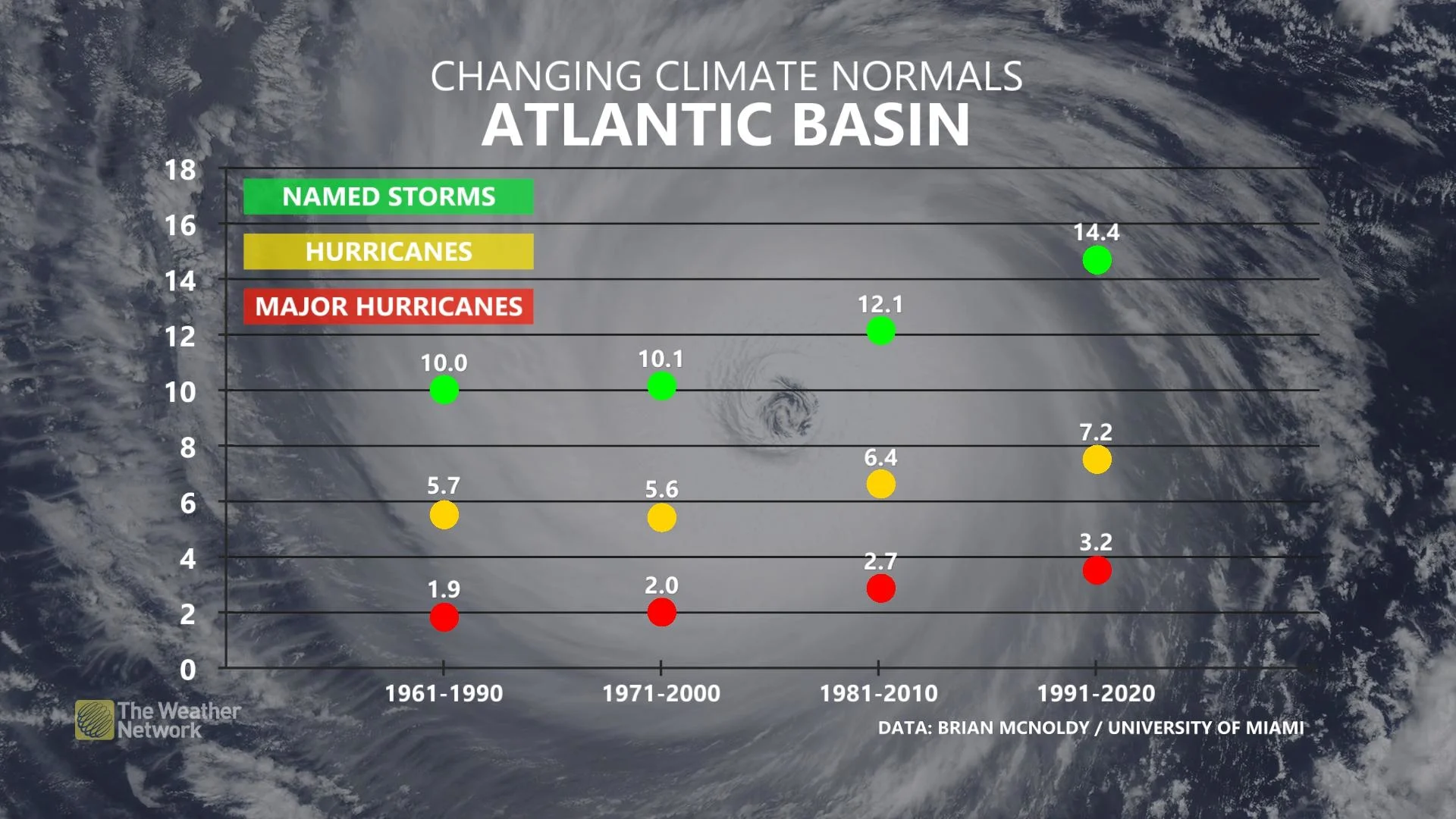
Hurricane season is heating up again. What happens when we run out of names?
Sam, the 18th named Atlantic storm of 2021, has formed – and with the "official" end of the season more than two months away, the hurricane name list may overflow for the second year running.
The 2021 Atlantic Hurricane season was expected to be above-average, and so far, it's delivered.
A total of 18 named storms have rolled across the Atlantic Basin this year. The most memorable for Canadians was Hurricane Larry, which slammed eastern Newfoundland two weeks ago, while the most powerful, Ida, peaked at Category 4 and pummelled Louisiana at the end of August.
Storm number 18 formed on Wednesday west of Cabo Verde, and strengthened to tropical storm status Thursday, being given the name Sam. Forecasters say it may reach hurricane status before the weekend as it tracks westward toward the Caribbean.

Hurricane season traditionally runs from June 1st to November 30th, with substantial flexibility on either side of that range. With more than two months left to the season, there's plenty of time for future storms to eat through the remaining three names on the 2021 list.
In fact, once that happens, it will be the second season in a row to do so.

Once the 21st storm comes and goes, what do we name the 22nd, and beyond?
In the past, forecasters would switch to the alternate Greek alphabet, starting with Alpha and working their way through. The first time that happened was in 2005, with 28 storms total, six of them given Greek names. The last, Zeta, actually ended up lingering for a few days into 2006, and the season as a whole was the most active up to that point.
Fifteen years later, 2020 outdid that season. A total of 30 named storms raged across the Atlantic basin, eight of them given Greek designations. That's where the Greek name system, likely intended to be a little-used overflow, began to break down.
The World Meteorological Organization has a long-standing policy of retiring the names of storms that cause significant damage and death. In 2020, three storms qualified: Laura, Eta, and Iota.
Since the letters of a given alphabet don't tend to have readily available alternates in the same language, the WMO announced earlier this year that it would simply draw up a list of alternate Latin-based names going forward, ending the use of the Greek alphabet after only its second season of use.
In 2021, a hypothetical 22nd storm would be given the name Adria, and follow on from there from the list below.

In the years to come, that kind of overflow may become more common.
No individual storm can be attributed to climate change, but it has long been documented that climate change is making the conditions for extreme weather more common.
The number of storms appears to be gradually increasing as well. Every 10 years or so, forecasters will review and update the 30-year storm averages, and they've gradually been on the rise.

From 1961-1990, for example, the yearly average was 10 named storms, of which 5-6 were hurricanes, and fewer than two were major hurricanes of Category 3 or higher.
By the 1991-2020 range, those numbers had increased to 14-15 named storms per year, of which 7-8 were hurricanes and a little more than three were Category 3 or above.
Averages being what they are, not every year will follow those exact numbers, with some featuring fewer storms and others featuring more.
Still, the trend is undeniably upward so far, something communities will have to plan for over the coming century.






